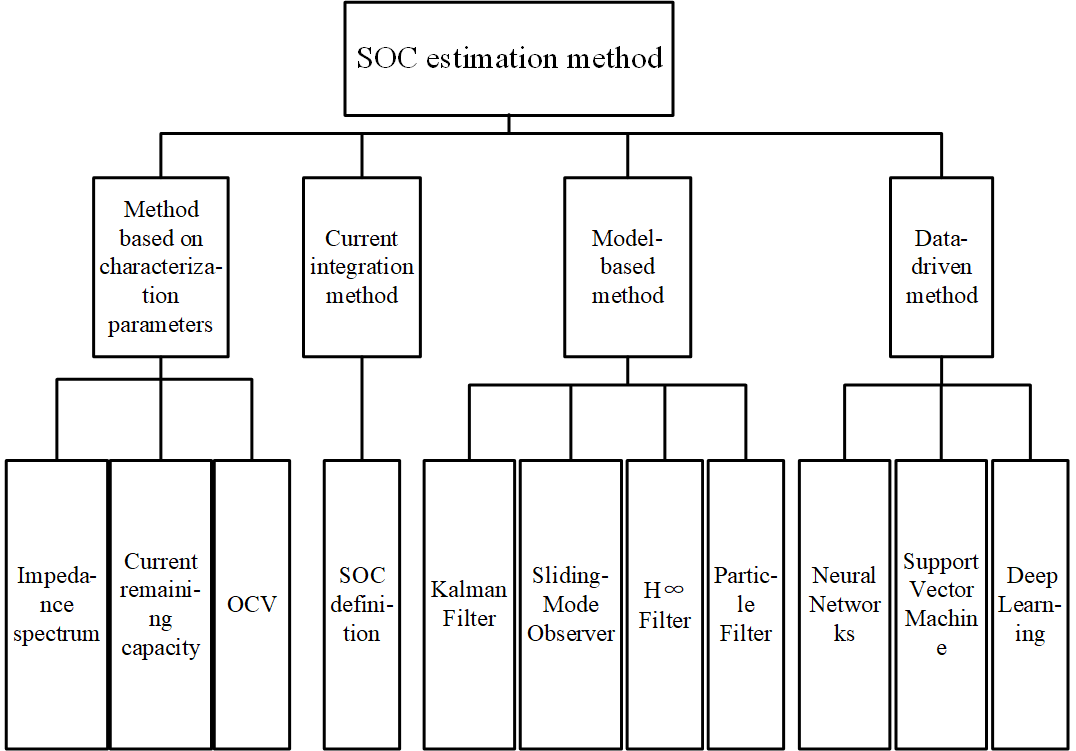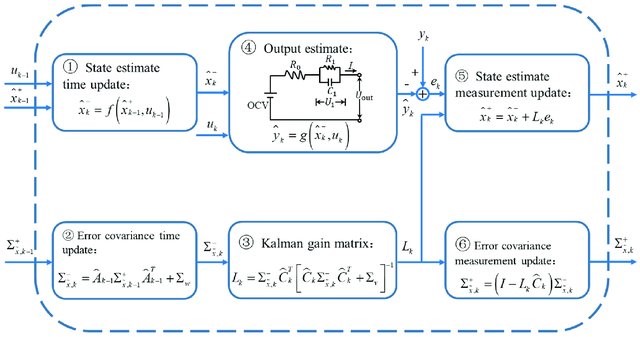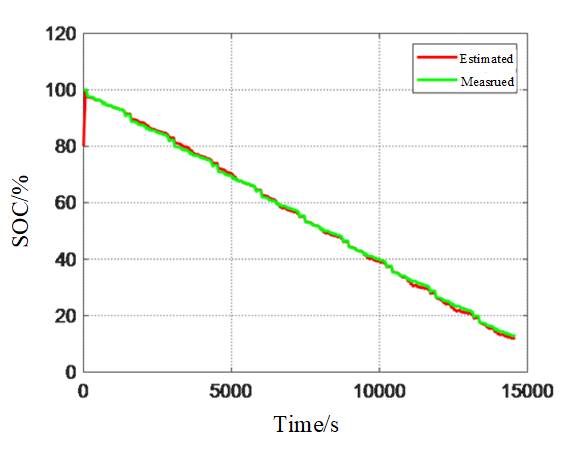SOC estimation
1. Classification of SOC estimation methods
The SOC of new energy vehicle's power battery is equivalent to that of ordinary fuel vehicle. As one of the important decision-making factors of energy management, SOC plays an important role in optimizing vehicle energy management, improving power battery capacity and energy utilization, preventing power battery overcharge and overdischarge, and ensuring the safety and long life of power battery in use. This section describes the SOC estimation method when the static capacity of power battery is known.
The structure of power battery is complex, the reaction is various, and the vehicle condition is bad and changeable, so it is difficult to obtain the exact value of SOC as the hidden state quantity. The common SOC estimation methods of power battery can be roughly divided into four categories: the method based on characterization parameters, the current integration method, the model-based method and the data-driven method. The classification is shown in Figure 1, and the specific introduction is as follows:

Figure 1 Classification of power battery SOC estimation methods
Method based on characterization parameters
The method is mainly divided into two steps: ①Establish the offline relationship between the power battery characterization parameters and the SOC; ②Calculate the power battery characterization parameter values in real time, and use them to calibrate the power battery SOC.
The application of this method needs to meet two prerequisites: the offline relationship between the established characterization parameters and the SOC should be relatively stable, and the selected characterization parameters should be easy to obtain. Optional characterization parameters include current remaining capacity, impedance spectrum, OCV, etc. The current remaining capacity can be obtained by the discharge experiment method, which is considered to be the most direct method to determine the SOC of the power battery. However, it is difficult for new energy vehicles to perform long-term constant current discharge to determine the remaining capacity during operation, making this method only suitable for specific environments such as laboratories. The method based on impedance spectroscopy needs to use an electrochemical workstation to test the impedance of different SOC values of the power battery, and formulate the mapping relationship between SOC and parameters, and then complete the SOC calibration by looking up the table. The relatively stable OCV-SOC relationship is often used by the industry to calibrate the power battery SOC. A large number of BMS products also use this relationship to calibrate the initial SOC of the power battery. However, the accurate and direct measurement of OCV requires the power battery to stand for a long enough time. Therefore, in practice, it often needs to be used in combination with the OCV online identification method.
Current integration method
This method is also known as the Coulomb counting method, which uses the SOC definition to estimate the power battery SOC. As the current core method of power battery SOC calculation, the ampere-hour integration method is classic and easy to use, and is the most widely used. But it has three main drawbacks: ① The accurate value of the initial SOC of the power battery is difficult to obtain; ② The method requires high accuracy for the current sensor. However, in practical applications, the accuracy of current sensors is often affected by noise, temperature drift and other unknown random disturbances. In the integral calculation, these random variables are likely to cause accumulation errors, and the rounding calculation of the controller will also have a certain impact; ③ The degradation of the power battery performance causes the degradation of its static capacity, which affects the calculation accuracy of the SOC. The above three factors influence each other and further reduce the reliability of the method. In order to avoid the constraints of the above factors and improve the calculation accuracy, complex and tedious regular calibration is required. For this reason, this method is often combined with other methods to form a fusion method. For example, the OCV is used to determine the initial SOC of the power battery, and the ampere-hour integration method is used to calculate the subsequent SOC.
Model-based method
This type of method uses models and state estimation algorithms to complete SOC estimation. Therefore, this method first needs to establish a reliable performance model, apply filtering algorithms and observers, and build a model-based SOC estimation algorithm framework. The specific implementation process is shown in Figure 2:

Figure 2 model based SOC estimation algorithm flow of power battery
① Based on the SOC value of the previous time or the initial SOC and current measurement value, the Current integration method is used to calculate the SOC prediction value of the current time; ② the model parameter value is calculated based on the model parameter SOC relationship, such as ocv-soc relationship; ③ the model terminal voltage is calculated based on the model terminal voltage parameter relationship; ④ the model terminal voltage error, i.e. innovation, is obtained based on the voltage measurement value; ⑤ The final SOC correction value is obtained by modifying the above SOC prediction value with a certain gain (multiplier) of innovation, and then it is used for the next time input. The form of gain in step 5 depends on the state estimation algorithm. Obviously, the model-based method is a closed-loop method, which makes the algorithm robust by constantly modifying the SOC estimation. Generally speaking, the estimation accuracy of the model-based method is determined by the estimation process and the correction process. When the estimation result of the trust the current integration method (the SOC estimated value is accurate), the gain correction can be appropriately reduced; otherwise, the gain correction should be increased, but excessive correction will make the SOC value fluctuate violently, which should be adjusted according to the actual situation.
Data-driven method
Based on a large number of off-line data, this method establishes and trains the direct mapping relationship model between power battery current, voltage, temperature and power battery SOC. It is mainly divided into three steps: ① preprocessing of offline data, that is, sorting the data into the data format that meets the input and output requirements of the model, including data cleaning, normalization, data blocking, etc., in which data blocking refers to dividing the normalized data into training set, verification set and test set according to a certain proportion; ② model establishment and training, according to the size of the data, preliminarily confirm the data Determine the structure of the model, and then use the training set to train the model, and take the verification result of the verification set as the training cut-off condition; ③ model test, use the test set to test the model, judge whether the accuracy meets the requirements, if it meets, judge whether the training is completed, otherwise return to step ① to redesign and plan. Data driven method has special advantages in solving strong nonlinear problems with high estimation accuracy, but it often needs a lot of experimental data as prior knowledge, and the experimental data should fully reflect the characteristics of power battery, otherwise it is easy to cause over fitting of the model.
2. EKF-SOC Estimation
The performance of model-based estimation method depends on the performance of both model and state estimation algorithm. Kalman filter (KF) is the most widely used algorithm in SOC estimation of power battery. KF is an optimal estimation method in the sense of minimum variance proposed by American scholar Kalman in the early 1960s, which is convenient for computer real-time processing. It provides a solution to deal with the random noise directly. The parameter error is regarded as noise and the estimated measurement is regarded as spatial state variable. It makes full use of the measurement data and filters out the system and random measurement noise with recursive method to get the accurate spatial state value. However, the original KF is only suitable for linear systems, and extended Kalman filter (EKF) is extended to nonlinear systems. EKF uses Taylor expansion to linearize the power battery model, but the linearization process will bring truncation error, which will increase the SOC estimation error, and even cause divergence in some cases of improper initial value setting. Therefore, it is necessary to improve and optimize the power battery model, or use the improved Kalman filter algorithm to improve the accuracy and robustness of the state estimation system. The SOC estimation process based on extended Kalman filter algorithm EKF is shown in Figure 3.

Figure 3 SOC algorithm flow of EKF filter
3. Main Results
In order to evaluate the EKF-based SOC estimation method, the DST data of a certain power battery cell at 25°C is used to evaluate the SOC estimation method. The initial value of SOC is set to 80%, which is the accurate initial value of SOC. Figure 4 shows the comparison between the estimated SOC value and the reference value, and Figure 5 shows the SOC estimation error.

Figure 4 Comparison of SOC estimated value and reference value

Figure 5 shows the SOC estimation error
4. References
[1] R. Xiong. Core Algorithms of Battery Management System. Beijing:China Machine Press,2018. (Chinese) (Chapter Four)
[2] R. Xiong, J. Cao, Q. Yu, H. He* and F.C. Sun*, “Critical Review on the Battery State of Charge Estimation Methods for Electric Vehicles”, IEEE ACCESS, vol.6, no.1, pp. 1832-1843, Feb 2018. (Download)
[3] R. Xiong*, Q.Q Yu*, LY Wang, C Lin, “A novel method to obtain the open circuit voltage for the state of charge of lithium-ion batteries in electric vehicles by using H infinity filter”, Applied Energy, vol. 207, pp. 341-348, Dec 2017. (Download)
[4] R. Xiong*, F. Sun, Z. Chen and H. He, “A data-driven multi-scale extended Kalman filtering based parameter and state estimation approach of lithium-ion polymer battery in electric vehicles”, Applied Energy, vol. 113, pp. 463-476, Jan 2014. (Download)
[5] R. Xiong*, F. Sun, H. He and T. Nguyen, “A data-driven adaptive state of charge and power capability joint estimator of lithium-ion polymer battery used in electric vehicles”, Energy, vol. 63, pp. 295–308, Dec 2013. (Download)
[6] R. Xiong*, F. Sun, X. Gong and H. He, “Adaptive state of charge estimator for lithium-ion cells series battery pack in electric vehicles”, Journal of Power Sources, vol. 242, pp. 699–713, Nov 2013. (Download)
[7] R. Xiong, X. Gong and C. Mi*, “A robust state-of-charge estimator for multiple types of lithium-ion batteries using adaptive extended Kalman filter”, Journal of Power Sources, vol. 243, pp. 805–816, Dec 2013. (Download)
[8] R. Xiong, H. He*, F. Sun and K. Zhao, “Evaluation on State of Charge Estimation of Batteries with Adaptive Extended Kalman Filter by Experiment Approach”, IEEE Transactions on Vehicular Technology, Vol. 62, no.1, pp. 108–117, Jan 2013. (Download)
[9] R. Xiong*, H. He; F. Sun and K. Zhao, “Online Estimation of Peak Power Capability of Li-Ion Batteries in Electric Vehicles by a Hardware-in-Loop Approach”, Energies, vol. 5, no. 5, pp. 1455-1469, May 2012. (Download)
[10] H. Mu, R. Xiong*, H. Zheng, Y. Chang and Z. Chen, “A novel fractional order model-based state-of-charge estimation method for lithium-ion battery”, Applied Energy, vol. 207, pp. 379-388, Dec 2017. (Download)
5. Available Resources
(1) SOC estimation algorithm information: click to download (PDF watermark textbook)




